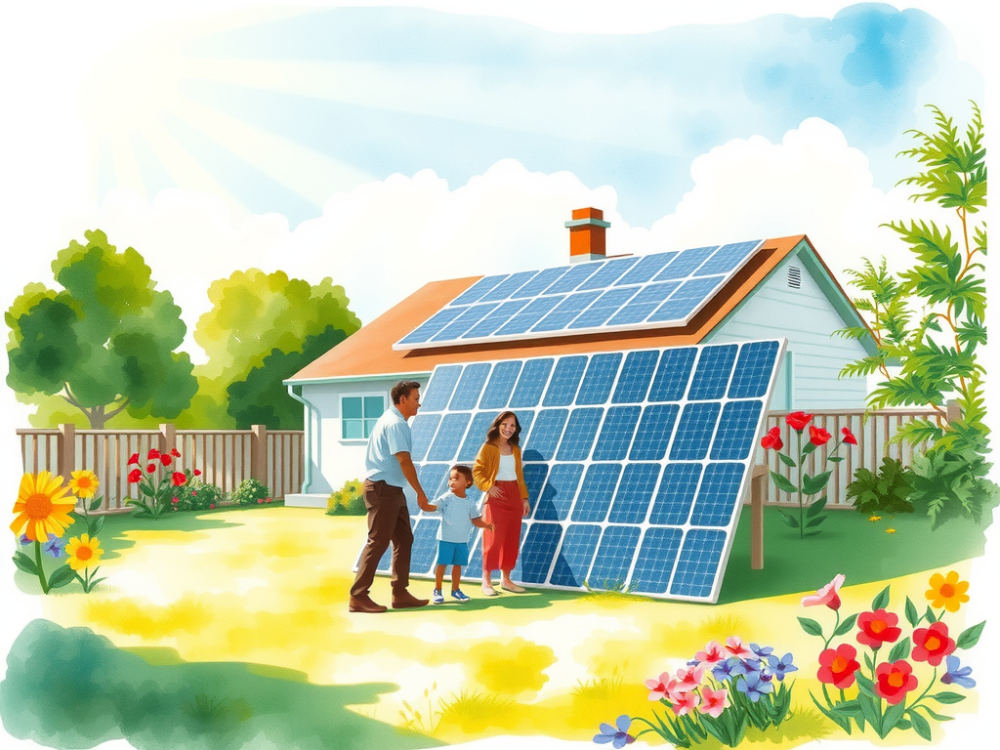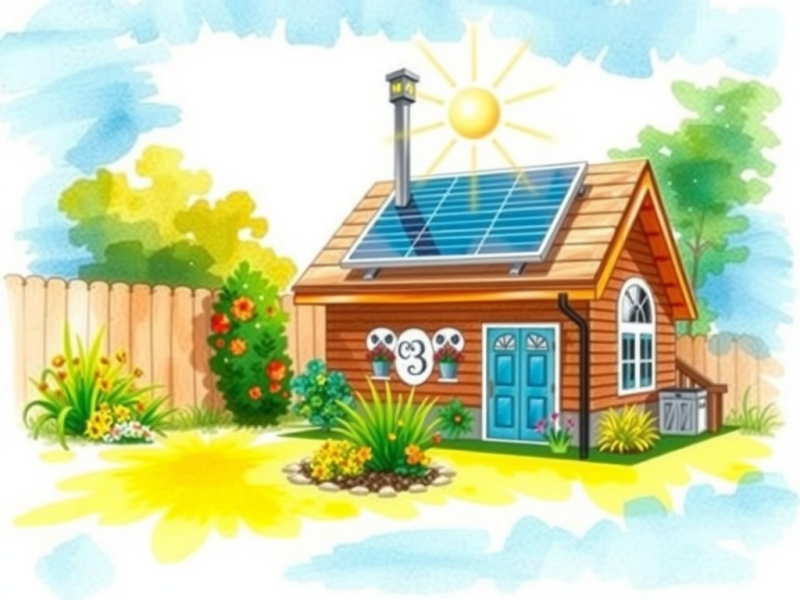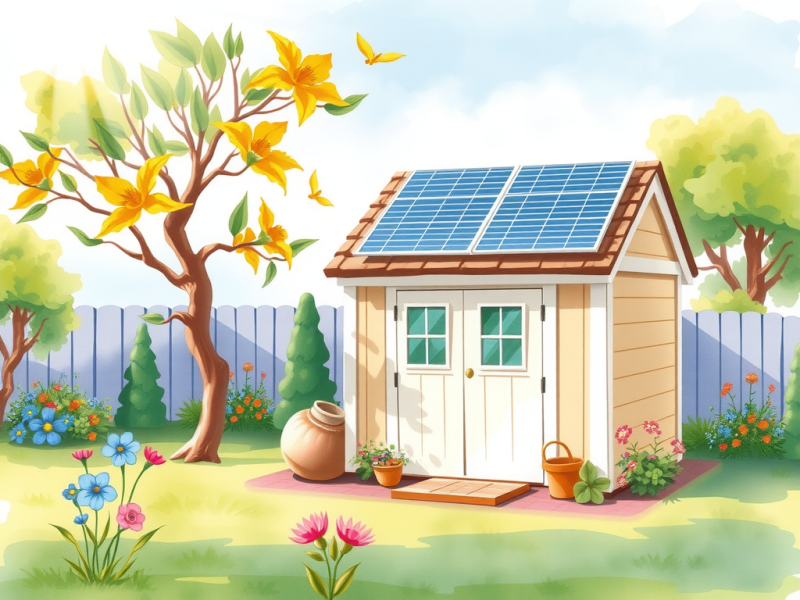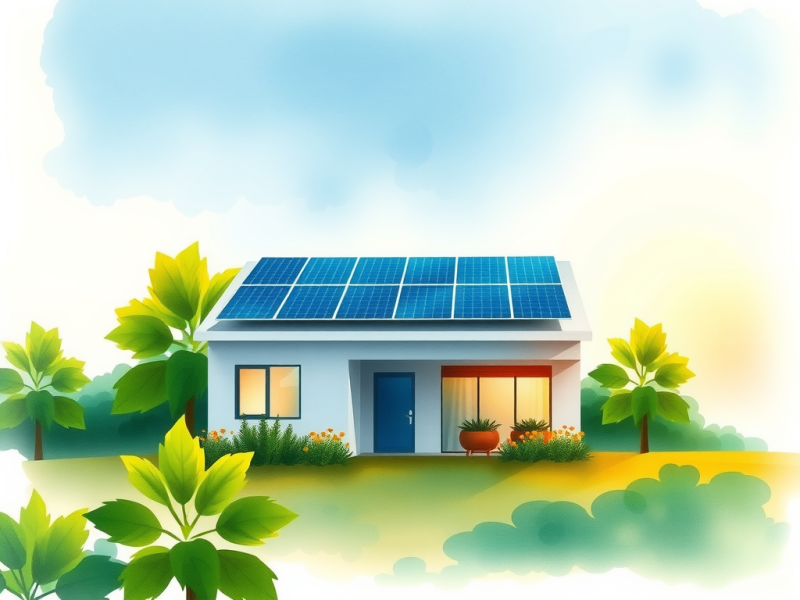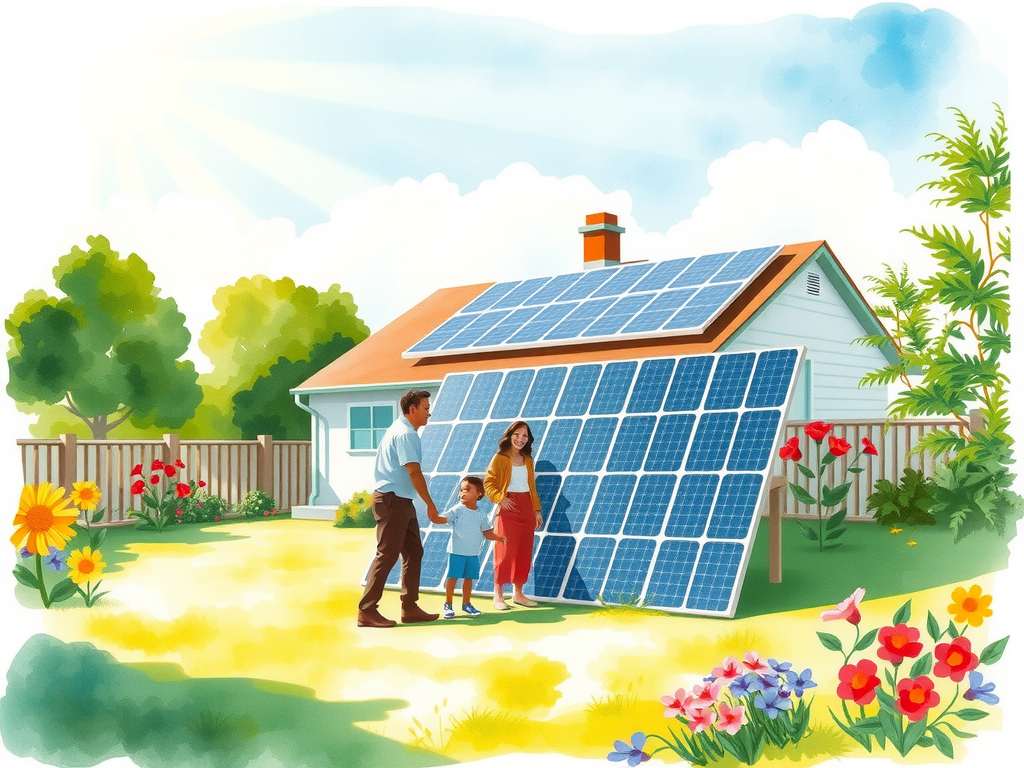
Installing your solar panels can empower homeowners to harness renewable energy. This guide simplifies the process of installing a solar power system.
Start by assessing your roof for ideal solar panel placement.
Next, calculate your electricity demand for proper system sizing.
Choosing high-quality materials is important, so select good panels and solar inverters. Ensure you follow all safety regulations.
With the right tools and effort, you can save significantly on labor costs.
Click here to learn more about: how to make homemade soap at home
Understanding Solar Energy Basics
Solar energy provides many benefits for homeowners. It reduces reliance on fossil fuels and lowers carbon emissions.
Achieving energy independence lets you control your energy costs without relying on utility companies.
To calculate potential savings, check your current electricity bill.
Multiply your kWh usage by your electricity rate. Then, compare this number with the expected output from your solar panels.
This simple calculation shows how much you can save by switching to solar.
Assessing Your Roof
Assess your roof or property for ideal solar panel placement. A south-facing roof is best for maximum sunlight exposure.
Ensure there are no obstructions, such as trees, that create shading.
Shading analysis can help identify best panel locations.
Getting this right is essential for maximizing energy output.
Calculating Electricity Demand
Calculating your electricity demand helps in properly sizing your solar system. List your household appliances and their energy consumption.
This information assists in understanding your overall energy consumption. Accurate calculations lead to efficient system sizing and increased savings.
Choosing Quality Components
Select high-quality solar panels, inverters, and racking systems.
Using reputable brands ensures durability and efficiency in your solar power system.
Regularly checking the performance monitoring can help maintain high energy production levels.
Obtaining Permits and Compliance
Obtaining necessary permits and following local codes is essential.
Most homes require both grid connection permits and electrical inspections. Ensure that your installation meets local regulations to avoid fines.
Installing the System
Begin by installing mounting racks securely.
Next, connect your solar panels and manage all electrical connections carefully. If you are using a battery storage system, ensure proper connections to your battery bank.
Consult professionals for the final grid connection and electrical inspections.
Testing and Monitoring
Test your solar power system after installation.
Monitor its performance using dedicated apps or tools.
Regularly check for optimal results and maintenance needs. This ensures your system operates efficiently.

What Is A Photovoltaic System
A photovoltaic system is a method that converts sunlight directly into electricity using solar cells. These systems are key parts of renewable energy technologies, providing a clean energy solution.
Unlike solar thermal systems, which focus on heat, photovoltaic systems emphasize electricity production.
When homeowners decide on a photovoltaic system, they must assess their electricity demand and check roof conditions, such as orientation and shading for solar panel placement.
This ensures the system meets energy needs while improving energy efficiency and achieving utility savings.
Steps In The Installation Process
The process of installing a solar power system requires careful planning. Follow these steps for a successful installation:
- Assess your roof to find the best place for solar panels. South-facing roofs generally perform best.
- Calculate your electricity demand to determine the right system size.
- Obtain necessary permits and follow local codes for regulatory compliance.
- Gather installation tools and materials, ensuring safety equipment is available.
- Install racking systems or mounting structures securely.
- Connect solar panels to the racking and manage electrical connections safely.
- Connect the system to the breaker box if it’s grid-tied or to a battery bank for off-grid systems.
- Consult professionals for final electrical inspections and grid connections to ensure compliance.
- Test and monitor the system’s performance regularly.
DIY solar installations can save homeowners 30–50% compared to professional setups.
Regular monitoring and maintenance are also essential to keep the system performing at its best. Proper planning and effective installation promote both safety and energy efficiency.
Photovoltaic Systems
- Photovoltaic systems can reduce electricity bills by generating power from sunlight.
- Installing solar panels can increase property value by up to 4% according to various studies.
- On average, a well-installed photovoltaic system can provide a return on investment within 5 to 10 years.
- Solar energy systems can operate efficiently for 25 years or more with proper maintenance.
Assessing Your Roof For Solar Panels
Conducting a roof assessment is necessary before installing solar panels. A sturdy roof supports solar panels, ensuring they last longer and function well.
Start by checking for damage or leaks.
Look closely at the roof’s age and material.
Tip: Examine for signs of wear, like missing shingles.
Next, evaluate your roof space. Measure the area available for solar energy systems, considering shading from trees or nearby buildings.
Tip: Use a sun calculator app to see how many sunlight hours your roof receives. This will help in optimizing energy production and the longevity of your solar power system.
Proper roof condition is essential for the longevity of your photovoltaic system.
How To Maximize Utility Savings
Maximizing utility savings is key when installing a solar power system.
Learning about net metering can enhance your savings.
Net metering allows you to sell excess energy back to the grid.
Tip: Check with your utility company for net metering policies and details.
Track Your Energy Usage
Effectively tracking your energy consumption can lead to better savings. Use smart meters or apps for performance monitoring.
Identify your peak usage times and adjust your habits accordingly.
- Tip: Set alerts for usage thresholds to help save on utility bills.
- Track daily and monthly energy consumption.
- Adjust usage habits based on your findings.
Following these steps will aid in achieving energy independence and long-term savings with your home solar system.
Solar Panel Installation
- A well-maintained roof can extend the lifespan of solar panels by up to 25 years.
- Homes with solar panels can save an average of $20,000 on electricity bills over 20 years.
- Net metering can provide homeowners with credits for excess energy produced, reducing overall energy costs.
- Utilizing smart meters can help identify energy usage patterns, leading to more efficient consumption and savings.
Exploring Different Inverter Types
Choosing the right inverter types is essential for a successful solar energy system. The solar inverter choice directly impacts energy efficiency and overall system performance.
An efficient solar inverter can increase energy output significantly.
When planning for future upgrades, you may also benefit from long-term savings.
Consider the following factors when selecting between string inverters and microinverters:
- Energy Needs: Evaluate your home electricity demand to size your system properly.
- Shading Analysis: Analyze shading on your roof that may affect performance.
- Roof Layout: Consider how your roof layout influences panel placement.
Effective monitoring tools can aid in performance tracking and optimizing energy consumption. Overall, the appropriate inverter type contributes to achieving energy independence and maximizing utility savings.
What Are Racking Systems And Mounting Racks
Racking systems and mounting racks hold solar panels securely in place. Selecting the right mounting solution is important for the entire installation process. These structures ensure that solar panels are optimally positioned for maximum energy production. To maintain these systems:
- Regular Inspections: Check for rust or damage, as this can impact performance.
- Tighten Bolts and Screws: Keeping all fasteners secure enhances safety and stability.
- Safety Regulations: Follow all local safety regulations during installation.
Proper maintenance not only protects your photovoltaic system but also boosts overall energy efficiency.
Correct panel placement and robust racking support significantly influence long-term system performance and reliability.
Inverters and Racking Systems
- String inverters are typically more cost-effective for larger systems, while microinverters offer enhanced performance in shaded areas.
- Proper racking systems can improve solar panel durability and longevity, reducing maintenance costs over time.
- Regular inspections of racking systems can prevent costly repairs and ensure optimal energy production.
- Efficient monitoring tools can increase energy savings by allowing homeowners to track usage and optimize consumption patterns.
Ensuring Safety Regulations In Installation
Prior to starting your solar panel installation, understanding safety regulations is essential. Compliance with local codes protects your property and family during the installation process.
Begin by familiarizing yourself with the safety standards that apply to solar energy projects.
Common Safety Standards
Following established safety standards helps avoid legal issues and potential hazards.
Here is a practical checklist for your solar energy project:
- Obtain all necessary permits prior to installation to comply with local laws.
- Wear personal protective equipment (PPE) to ensure safety during the installation.
- Check that all electrical connections are secure and tested for safety.
- Conduct a thorough roof assessment to make sure it can support the solar panels.
- Monitor weather conditions to avoid unsafe situations while working.
Quality installation enhances both safety and energy efficiency.
Importance of Compliance
Adhering to safety regulations promotes safe solar installations. This ensures efficient energy production and minimizes risks. Following local codes can save you from future penalties. Proper electrical inspections are crucial for grid connection. Regular maintenance checks help sustain optimal power output.
By following these guidelines, you will enhance the safety and efficiency of your DIY solar project.
| Safety Measure | Importance |
|---|---|
| Obtain necessary permits | Ensures compliance with local laws and regulations |
| Wear personal protective equipment (PPE) | Protects installers from potential hazards |
| Conduct a thorough roof assessment | Ensures structural integrity to support solar panels |
| Regular maintenance checks | Helps sustain optimal power output and safety |

